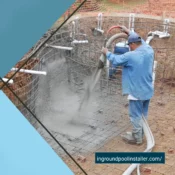The Cost-Benefit Analysis of Installing Inground Pools

The Cost-Benefit Analysis of Installing Inground Pools
Installing an inground pool is a significant investment for homeowners. Understanding the cost-benefit analysis of this decision is crucial to ensure it aligns with your lifestyle and financial goals. This article explores the various factors to consider when installing an inground pool.
Initial Costs of Inground Pool Installation
Breaking Down the Installation Expenses
The initial cost of installing an inground pool varies based on size, materials, and design complexity. Costs can include excavation, materials like concrete or fiberglass, equipment, and labor. Understanding these expenses is essential for budget planning.
Additional Features and Aesthetics
Additional features such as lighting, heating, landscaping, and custom design elements can significantly impact the overall cost. While these features enhance the pool experience, it's important to evaluate their necessity against your budget.
Long-Term Financial Considerations
Maintenance and Upkeep Costs
Regular maintenance is essential for the longevity of an inground pool. This includes costs for cleaning, chemicals, repairs, and utility expenses for heating and filtration systems. Budgeting for these ongoing expenses is crucial.
Impact on Property Value
An inground pool can potentially increase your property value, especially in regions with warmer climates. However, the extent of this increase can vary, and it's important to weigh this potential benefit against the initial and ongoing costs.
Benefits Beyond Financials
Enhancing Lifestyle and Entertainment
An inground pool offers significant lifestyle benefits, including a space for relaxation, family time, and home entertainment. These intangible benefits contribute to the overall value of installing a pool.
Health and Wellness Advantages
Owning a pool provides easy access to low-impact exercise and can be beneficial for physical and mental health. The convenience of having a pool can encourage a more active and healthier lifestyle.
Making an Informed Decision
Assessing Personal Needs and Preferences
Consider your personal reasons for wanting a pool, such as family needs, entertainment options, or health and fitness goals. Aligning these reasons with the costs involved will help in making an informed decision.
Exploring Financing Options
For many, financing is a key component of installing an inground pool. Explore different financing options such as home equity loans, personal loans, or pool financing programs to find a plan that suits your financial situation.
In conclusion, the decision to install an inground pool involves a comprehensive cost-benefit analysis, considering both financial and lifestyle factors. By carefully evaluating these aspects, homeowners can make a decision that not only adds value to their property but also enhances their quality of life.
All Categories
- Concrete
- Concrete
- Concrete pools
- Construction
- Custom Features and Add-ons
- Design
- Design
- Design
- Design & Construction
- Design and Planning
- Features & Customization
- Infinity edge
- inground pool
- inground pool builder
- inground pool installer
- Installation
- Installation Process
- Legal & Administrative
- Materials
- planning and design
- Pool Aesthetics and Customization
- Pool Design
- Pool Equipment
- Pool Features
- Pool Features
- Pool Installation Process
- Pool Materials
- Pool Materials
- Pool Types
- Project Planning
- Renovation
- Resurfacing
- top sights
- Types of Inground Pools
- Types of Inground Pools
- Types of Inground Pools
- Types of Inground Pools
- Water Treatment



